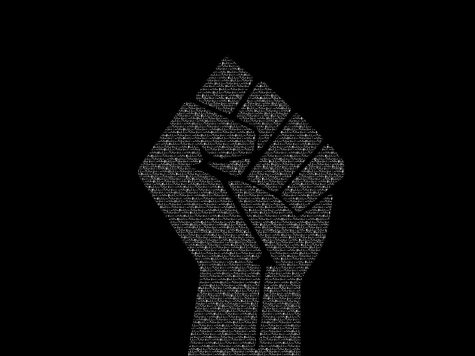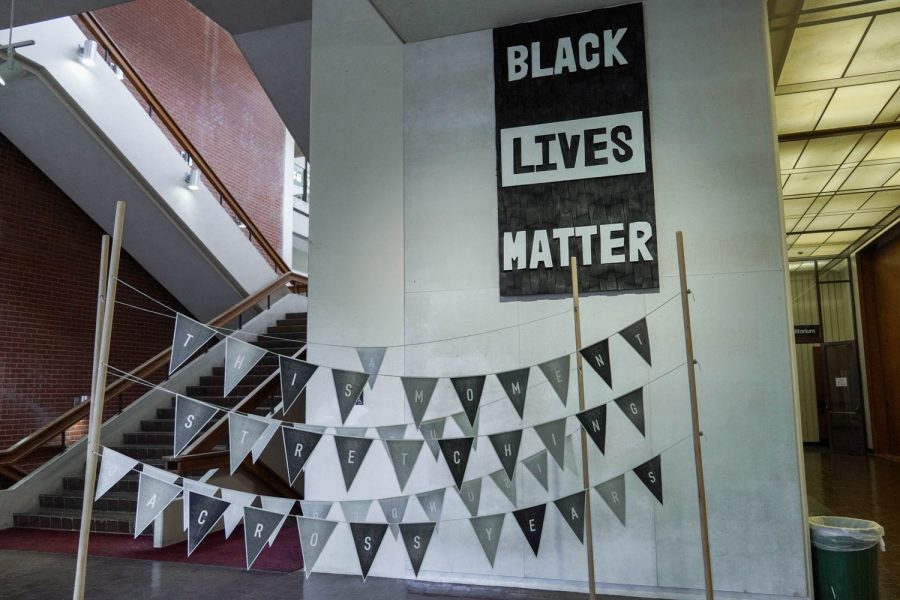Where is the BLM Movement Today?
So much growth and so much change, truly a fight worth fighting
The Black lives matter movement has been around for decades and grown stronger and sronger with time
January 19, 2023
Since 2022, the Black Lives Matter movement has ebbed and flowed through mainstream media addressing concerns of racial discrimination and police brutality.
#BlackLivesMatter has resurfaced many times, most recently gaining attention from the death of George Floyd in 2020.
But where is the movement now, and what can we do to keep supporting it?
Social media was the first place this movement gained traction. While this informed people all over the world about racial issues, it became a trend that came and went, just as any other hashtag.
But the message beyond the hashtag is not a trend. The hashtag has become affiliated with left-leaning politics, but it is a human rights issue, not a political one.
Our job as young citizens is to promote change for future generations and leave the world more progressive than when we entered it.
If social media is the most efficient way to lead by positive example, actively keeping people aware of social issues is a simple way to do our part.
Although Twitter is a mess currently because of Elon Musk’s new CEO title, this platform has still been one of the most influential for activism.
#BlackLivesMatter began on Twitter, as well as other social movements using #MeToo and #TimesUp. This platform has paved the way for voices to be heard from all across the globe.

The BLM fist shows support for the movement in more ways than one
With the rise in TikTok usage, social issues that would otherwise not be fully exposed on traditional journalistic mediums, are able to be seen from first-person perspectives. For example, the issues between Russia and Ukraine recently, Ukrainian citizens were able to post first-hand footage of the violence occurring in their country.
With this positive exposure to real things, comes exposure to misinformation about social issues and performative activism.
That is the problem with social media. During the peak of the movement in 2020, a significant portion of the activism seen was performative, often in fear of being a victim of “cancel culture.” A lot of these posts were found under the #Blackouttuesday where many of he remnants of this “movement” can be found. though now the hashtag has seemingly been turned into whatever people want.
Performative activism is nearly as toxic as standing by while witnessing racist conflicts because there is minimal progress being made to promote any kind of social change.
Many people felt pressured to post and repost activism statements and graphics on their Twitter accounts and Instagram stories to promote the Black Lives Matter movement.
But many of these people only posted, even if their views did not fully align with the movement due to the fear of being canceled.
Think back to the summer of 2020, when the young world of Instagram posted the black screens on their feeds to show support for the BLM movement.
Many of the individuals that posted these screens felt pressured to partake in this awareness for the sole purpose of fitting the politically correct agenda.
During the movements in June of 2020, 67% of adults in the United States supported the movement. Once September rolled around, only 55% of adults supported it, according to a study by Pew Research Center.
This timeline aligned with the trending of #BlackLivesMatter on Twitter. The percentage of supporters decreased with the number of tweets under the hashtag.
Fast forward to now, people of color are still victims of police brutality and racial discrimination without the publicity.
“There was a time when the Black Lives Matter movement was a highly discussed topic and then it noticeably started to slow down,” Kai-Lee SeSay, freshman business administration major said. “this should not have been the case because issues and injustices involving people of color are still happening and affecting our world.”
The Black Lives Matter Global Network Foundation is still working diligently to promote change, aside from being in the shadow of different headlines.
The BLMGNF was founded in 2013 alongside the growing Black Lives Matter to serve as a network for activists.
Their core values revolve around the abolition of white supremacy, believing this characteristic to be present all throughout the U.S. legal systems along with mainstream media and its effects on society.
The BLMGNF is not the only organization that is a part of the BLM social movement, but it is the most well-funded international advocate for the movement.
In 2021, the movement prompted the federal government to investigate law enforcement agencies for systematic constitutional violations in Ferguson, Louisville, Baltimore, Minneapolis and more.
In December of 2022, the BLMGNF set up a student relief fund for Black college students and alumni affected by the financial hardships that college tuition brings.
This was not in mainstream news, but directly affects the demographic that interacts the most with this specific platform.
The BLMGNF has continued their fight for racial equality and combating police brutality, but it is up to us as young citizens to work beyond the trending hashtag of #BlackLivesMatter and practice standing up in situations that we could easily remain silent in.










